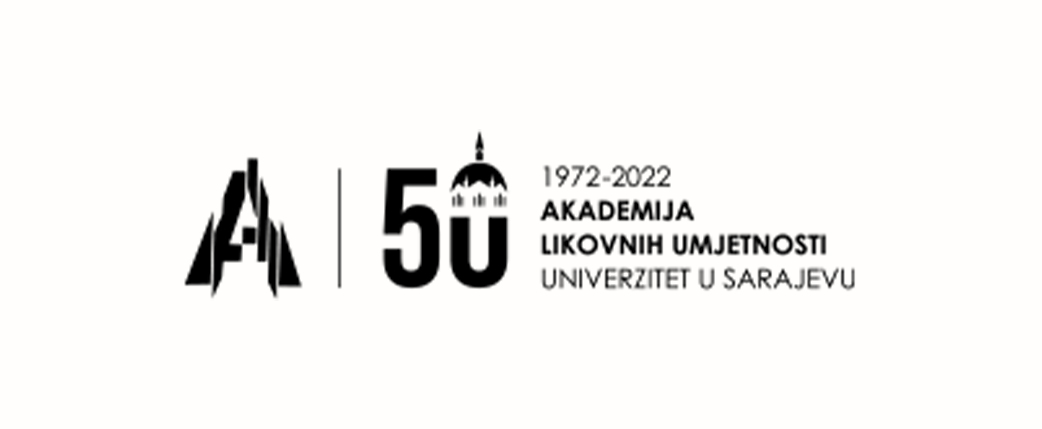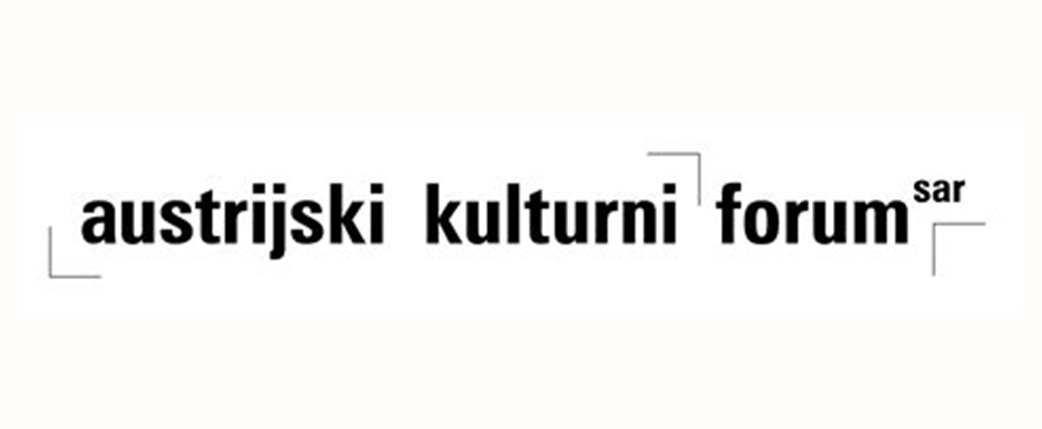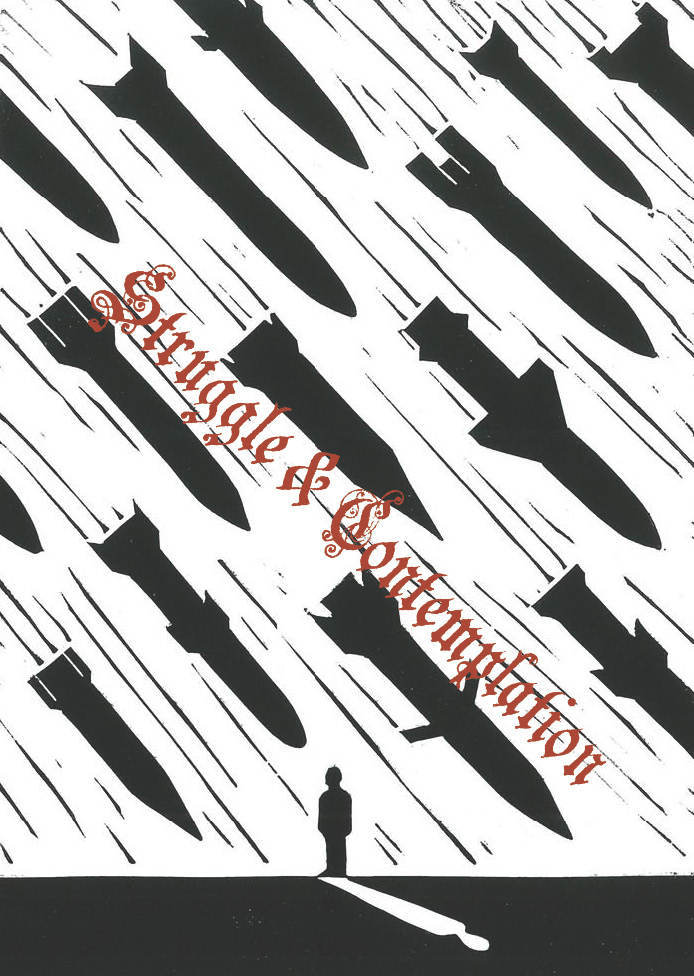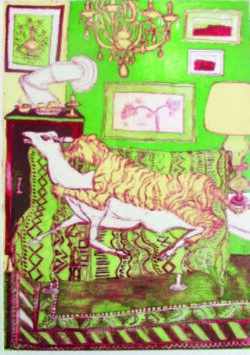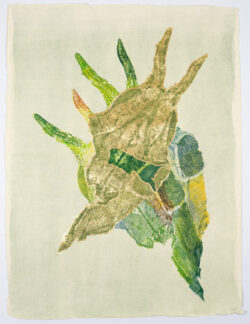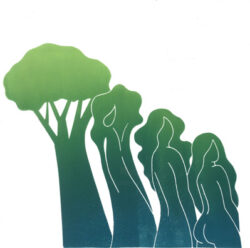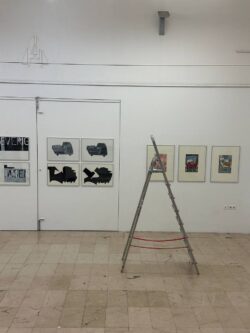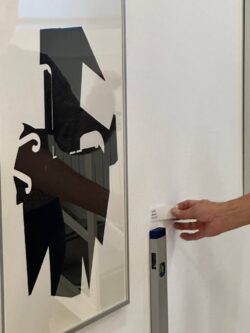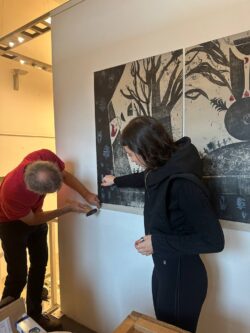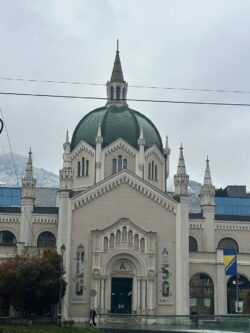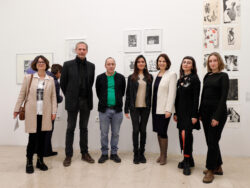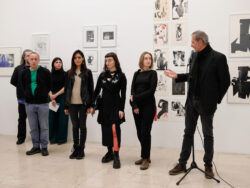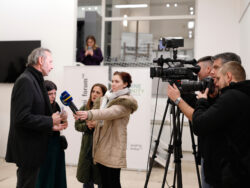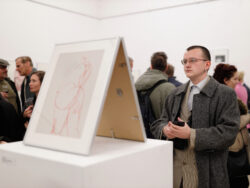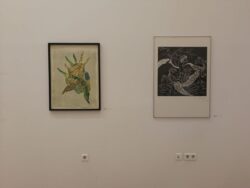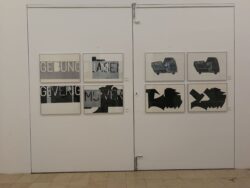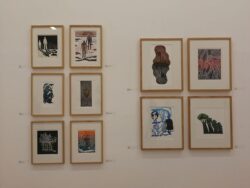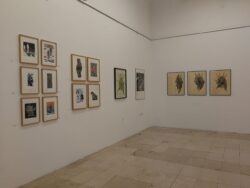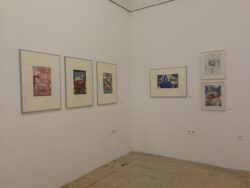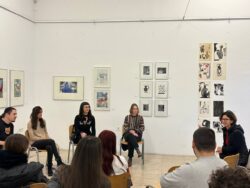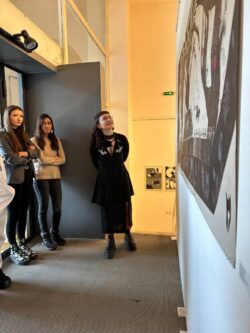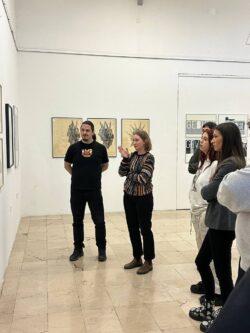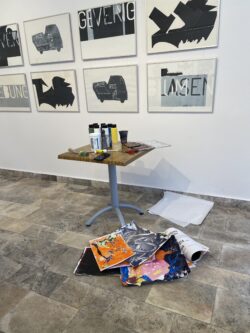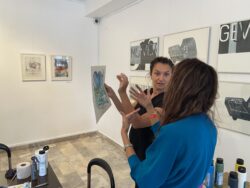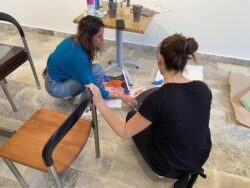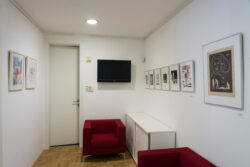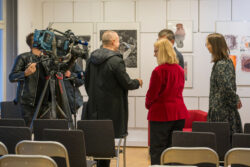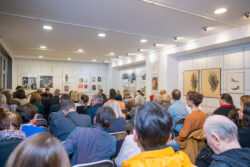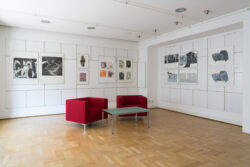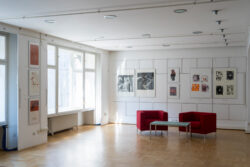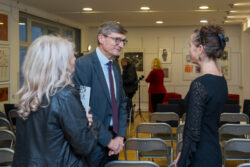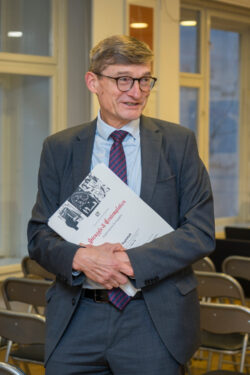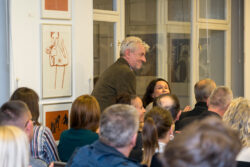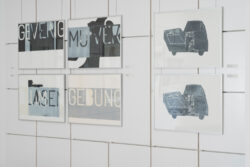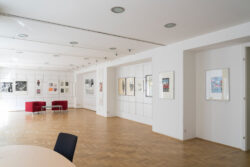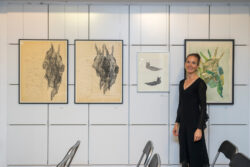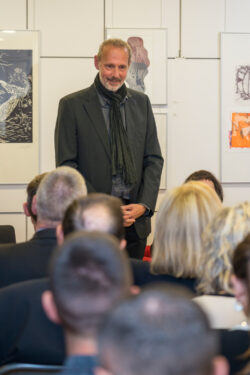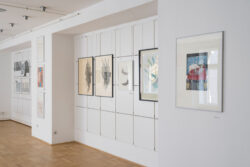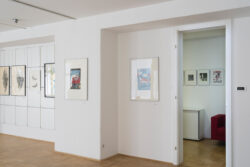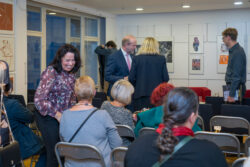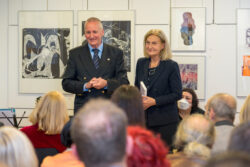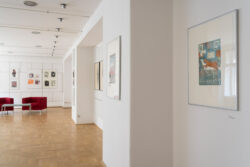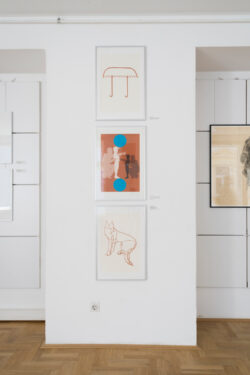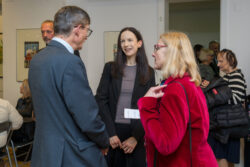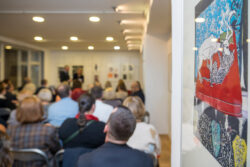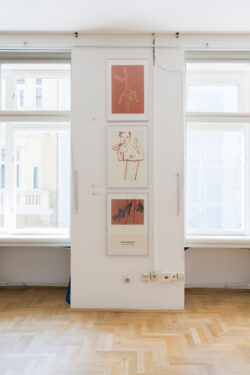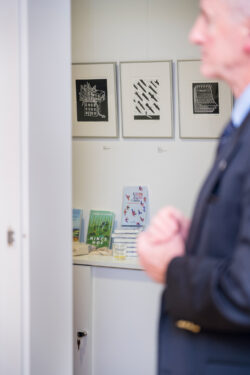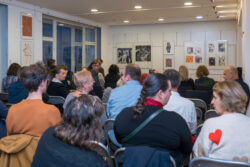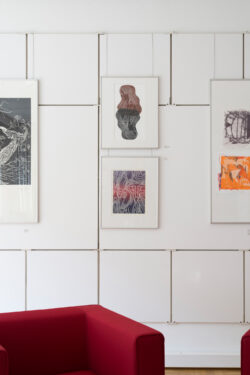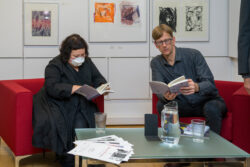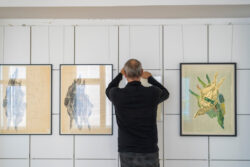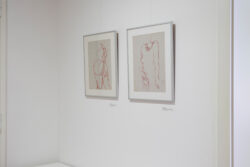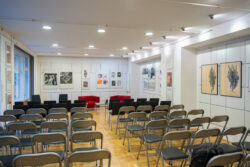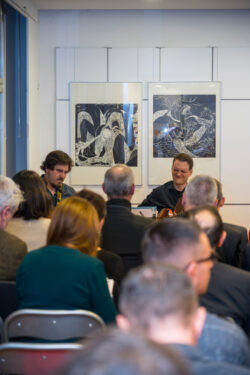Eröffnung / Otvorenje
23. Oktober 2024, 18:00 Uhr / 23. listopada 2024. u 18:00 sati
Struggle & Contemplation
Contemporary Printmaking
Alle Bildende Kunst Kooperationen Wanderausstellung
23. Oktober 2024 - 31. Januar 2025
Österreichisches Kulturforum Zagreb
Gundulićeva 3
Zagreb, Kroatien
Radno vrijeme
od ponedjeljka do petka
od 10:00 do 16:00 sati
Öffnungszeiten
Montag bis Freitag
10 bis 16 Uhr
Bild © Lera Elur
A diversity of printing methods evident in the works of six artists from Ukraine, Iran, and Austria
“Struggle & Contemplation – Kampf & Kontemplation“ is the title of an exhibition presenting works by six artists who operate in a broad spectrum between these opposing states. The terms demarcate a field of associations connected to both the working process and the works’ content: an exploration of printmaking techniques that have to be “conquered” with manual skill; the setbacks that have to be endured until the resulting work bears some semblance to one’s vision. Yet this struggle with the material can also give rise to pleasant surprises, unexpected occurrences that go beyond what one imagined.
In terms of content, the work titles are suggestive of both states. Verknäuelung and Taumelnd (Eng: Entanglement and Reeling – a screen print and color linocut by Josef Fürpaß) don’t sound particularly meditative; while Burning House and Broken Window (linocuts by Lera Elur) evoke something other than serenity and contemplation, her Nature’s Embrace and Woman Among Flowers give rise to a different mood. Margo Sarkisova’s collagraphy Mind Gardens explores the concept of karma, in which both struggle and contemplation play a key role.
Galerija “Marko K. Gregović”
85300 Petrovac na Moru, Crna Gora
Montenegro
16. März bis 10. Mai 2024
Galerija ALU
Univerzitet Sarajevo / Akademija likovnih
Obala Maka Dizdara 3
71000 Sarajevo
30. November bis 14. Dezember 2023
“Struggle & Contemplation“ aims to demonstrate the diversity and potential of an artistic genre that is often underestimated and occasionally even deemed inferior. A look at the long history of printmaking easily shows that there’s no reason for disdain. Depending on how the genre is defined, the date of its beginnings varies. Handprints were already in evidence in the caves of the Stone Age; a narrower definition marks the fourteenth century as the era of printmaking milestones, while the fifteenth century gave us Albrecht Dürer, the first major figure of both woodcut and engraving. The list of artists who have used printmaking techniques to create masterpieces in their respective oeuvre is long and ranges from the above-mentioned Nuremberg master to Rembrandt, Hokusai, Munch, Chagall, Matisse, Picasso, and Hundertwasser – and on to Warhol, Gertsch, and Haring. The list continues.
Printmaking has long since emancipated itself from its ancestor, drawing – but the relationship between the two remains close. Printmaking techniques – for instance aquatint, silkscreen, and monotype – also, however, allow for very painterly results, which makes it possible to combine shapes, surfaces, and lines and to set accents both strong and subtle. “Struggle & Contemplation” presents us with striking examples of these possibilities: austere, playful, expressive, poetic, dense, airy, severe, delicate.
In all likelihood, drawing marks the beginning of human artistic expression. Carvings in earth and stone, for whatever purpose they were made, represent attempts at communication and at recording experience. If we accept that a handprint – in soot, blood, or plant extracts – is a print (see above), the technique is one of the earliest examples of creativity. Before children draw in the stricter sense of the word, they make prints with their paint-smeared (or greasy?) fingers, on everything they come across (and not always to everyone’s delight). A very young Albrecht Dürer may also have used his family’s fine tablecloth in this manner.
Graphic arts, printmaking: the boundaries between the two are blurry. The tech-nique we are looking at is not always clear at first glance. In the final analysis, it doesn’t matter much, at least with regard to the viewer’s aesthetic experience. It’s a different case for art dealers, of course, for whom the label “original” still plays a significant role for pricing the work, even though the term, when applied to “original graphic works,” is often, from a purely commercial perspective, questionable. When does a print cease to be an “original”? With an edition of 10,000? Or 20,000? From an artistic perspective, it’s irrelevant how many copies of a print exist. Even a drawing in an edition of one can be bad, a print a unique work of the highest quality.
Artists of the twenty-first century who decide to express their ideas in printmaking can choose from a huge repertoire of techniques. Woodcut and linocut are still commonly used classical approaches and yield striking images. Aquatint is related to etching and often appears in combination with it; it entails the use of acid to etch shapes onto the printing plate, and a new or newly prepared plate is required for each separate layer. Aquatint makes for “painterly” compositions that are often reminiscent of watercolor. Silkscreen can yield results that are both graphic and painterly. True to its name (the Greek word “kola” means glue), collagraphy relies on adhesives to attach extraneous materials, which is why collagraphs have a tactile character.
The TetraPak etching is now a genre in its own right. The well-known beverage containers are used as printing plates: the plastic-coated cardboard they’re made of is unfolded and then engraved. Digital technology has opened up new possibilities: the spectrum of images ranges from simple drawings to digital collage (which has the advantage that the source material is more or less infinite) to highly complex renderings. Printed graphic art commissions for artificial intelligence are the latest development.
The six artists in “Struggle & Contemplation” come from Iran, Ukraine, and Austria and represent a broad panorama of printmaking’s many manifestations. Working from different backgrounds regarding culture and training, they expand the range of technical diversity in terms of content and aesthetics. It’s an impressive panorama in which there’s room for a precise analysis of structure as well as poetic narrative, for extended serial experimentation, and for the compression of motifs into distinctive, logo-like ciphers. The works exhibited represent an art that is limitless in many senses of the word—one that neither lays claim to national characteristics nor blurs into a globalized uniformity.
in Kooperation mit
